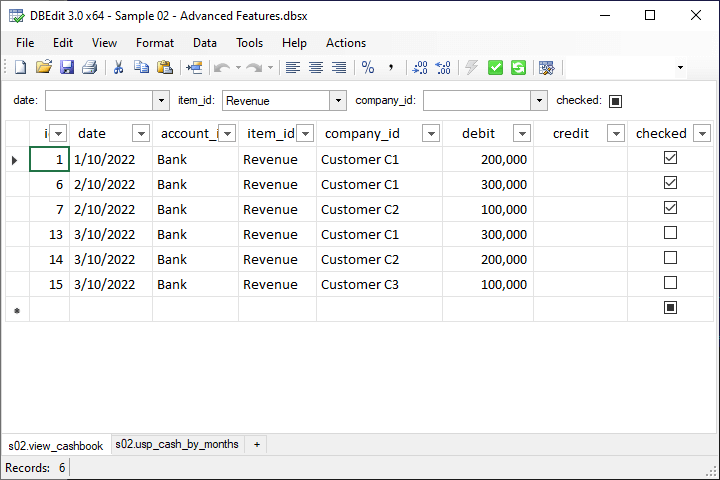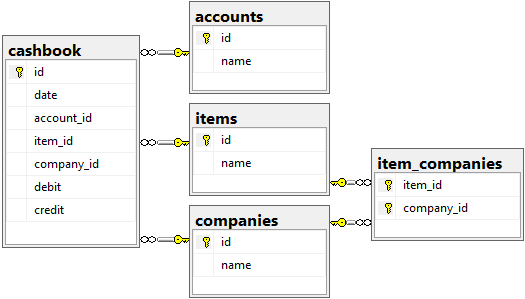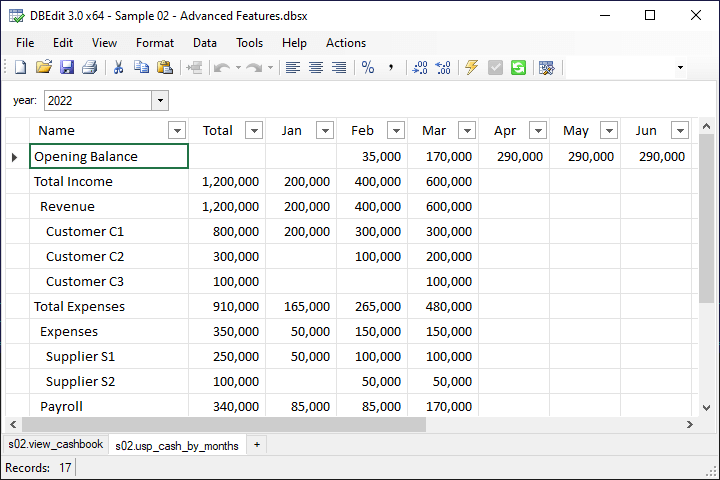Introduction to DBEdit for Database Editing
DBEdit is an advanced database editor that allows you to retrieve data from tables, views, stored procedures, or SQL queries and save changes back to the database.
Here's a sample of data loaded from a view:

Unlike other editors, DBEdit generates drop-down lists for fields and parameters using user-friendly value names from the referenced tables.
For example, the sample above includes the following tables:

The view is defined by the following SQL code:
CREATE VIEW s02.view_cashbook
AS
SELECT
*
FROM
s02.cashbook
That's all you need! DBEdit automatically identifies related tables.
Additionally, database developers can customize many features.
Here’s a sample of an editable report created using a stored procedure:

DBEdit can execute supplied procedures or SQL code in response to cell change events.
For instance, the handler for this stored procedure is declared as follows:
CREATE PROCEDURE s02.usp_cash_by_months_change
@column_name nvarchar(255),
@cell_number_value money = NULL,
@section int = NULL,
@item_id int = NULL,
@company_id int = NULL,
@year int = NULL
This procedure receives the column name and value of the edited cell, along with values from table columns and procedure parameters.
You can use DBEdit with any supported database platform in the same way:
- Microsoft SQL Server
- Oracle Database
- MySQL and MariaDB
- PostgreSQL
- Snowflake
- SQLite
Connecting to your database and editing data is straightforward.
To explore DBEdit's features, try out its samples. You'll find code templates for common tasks.
See also: